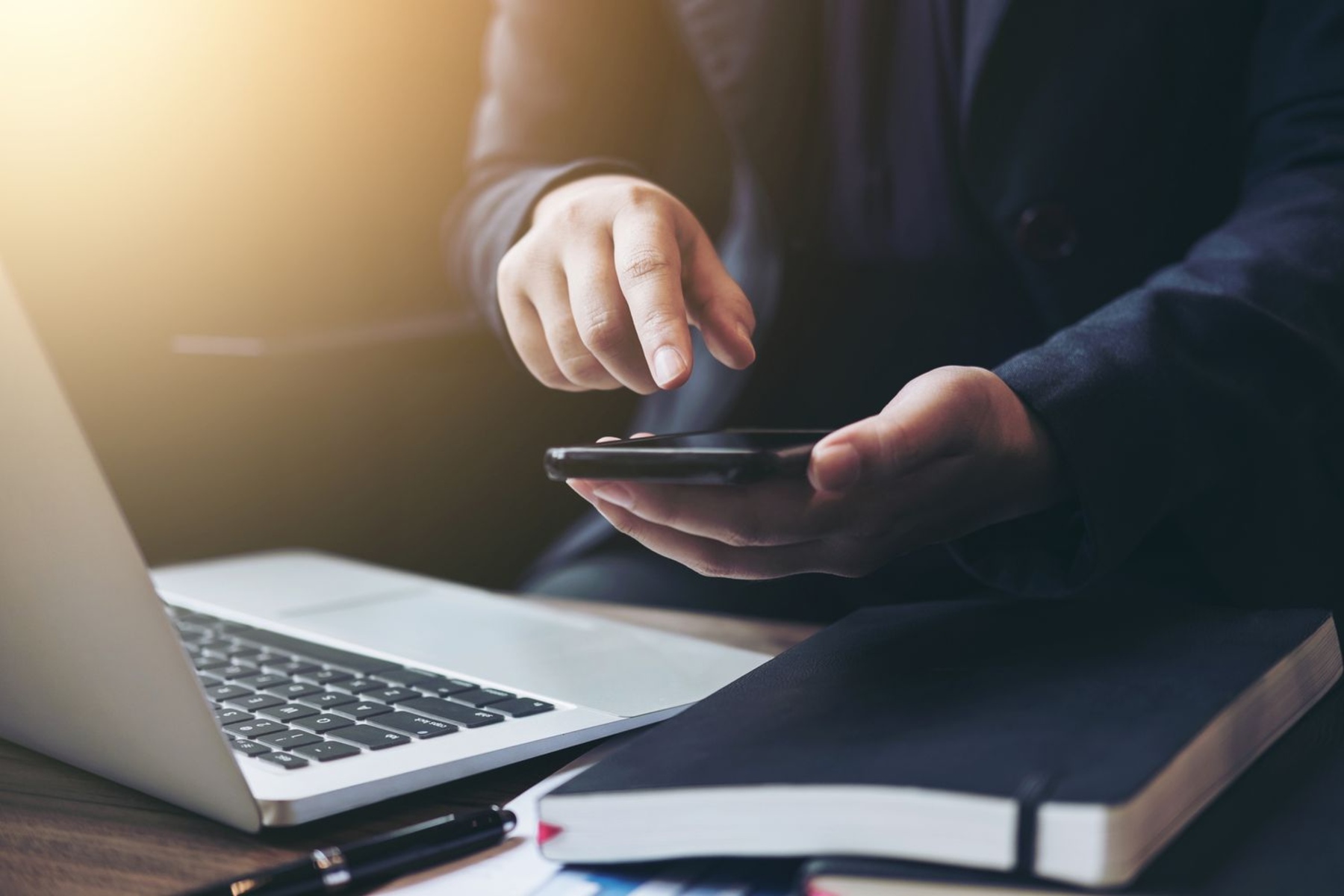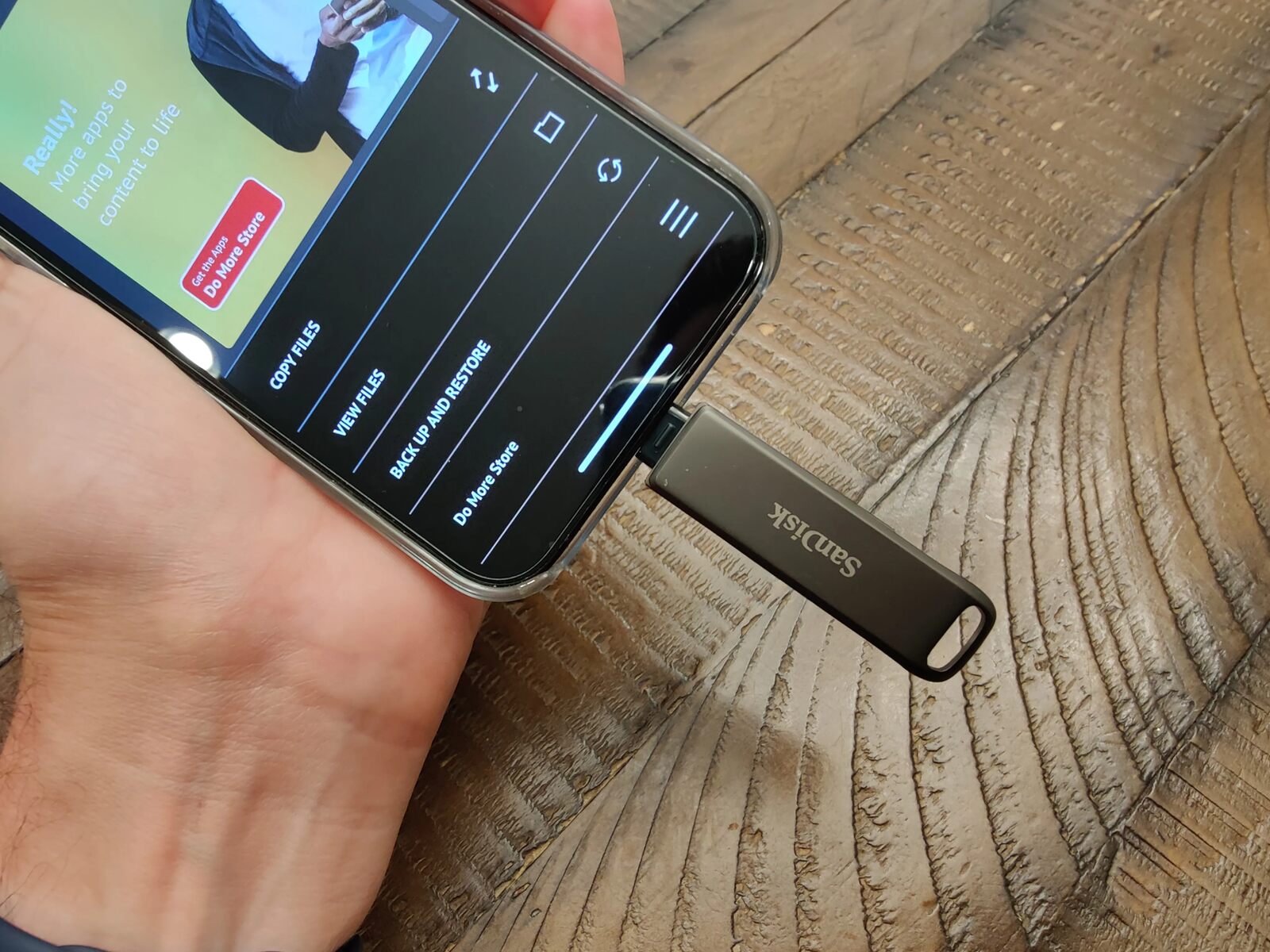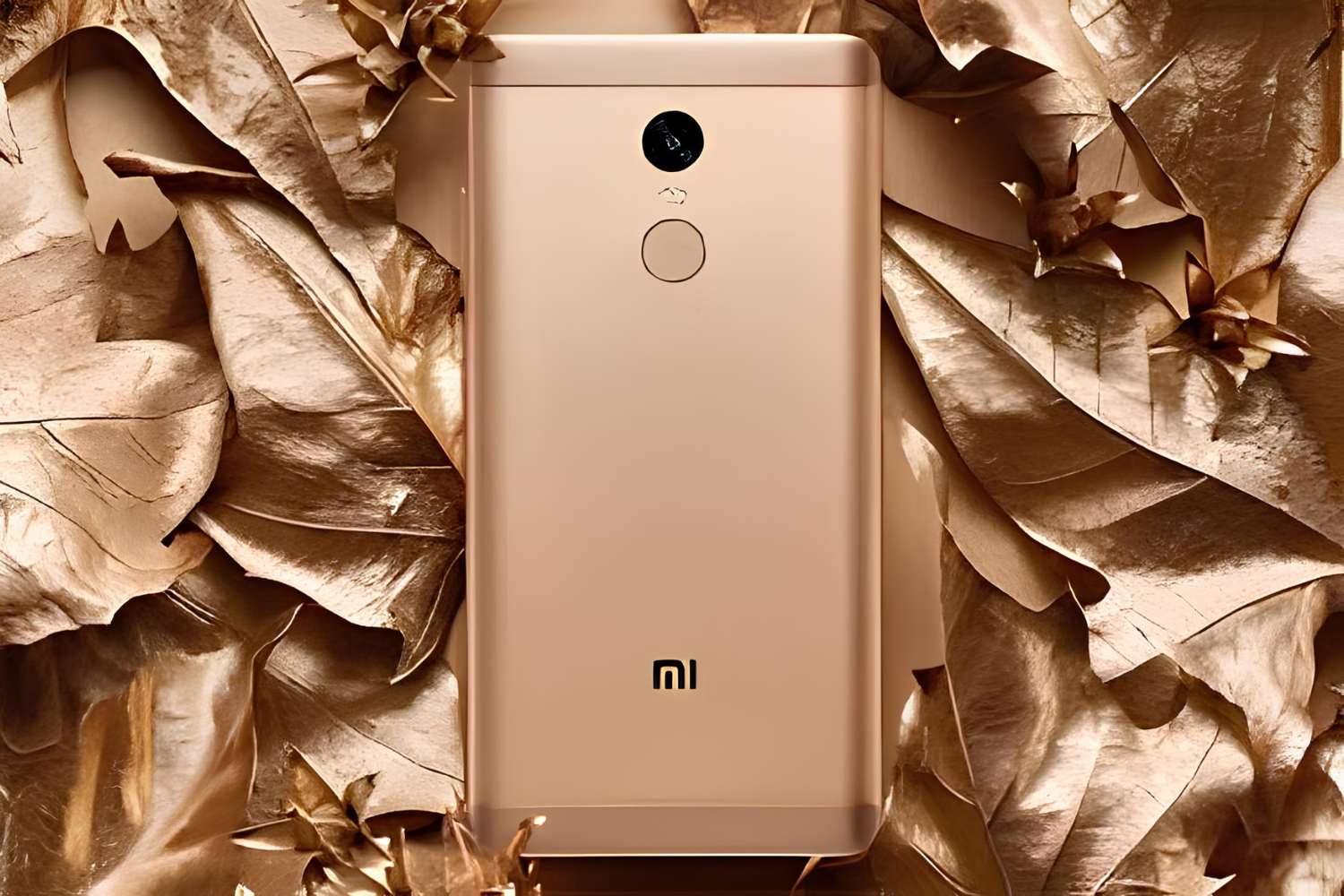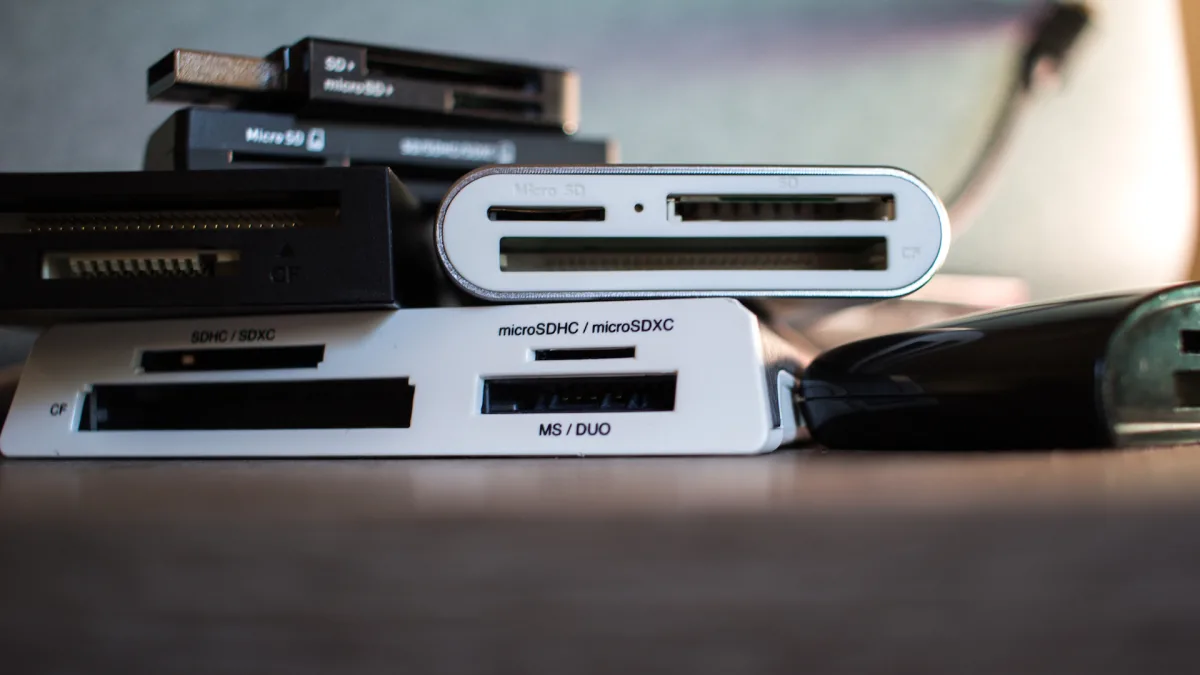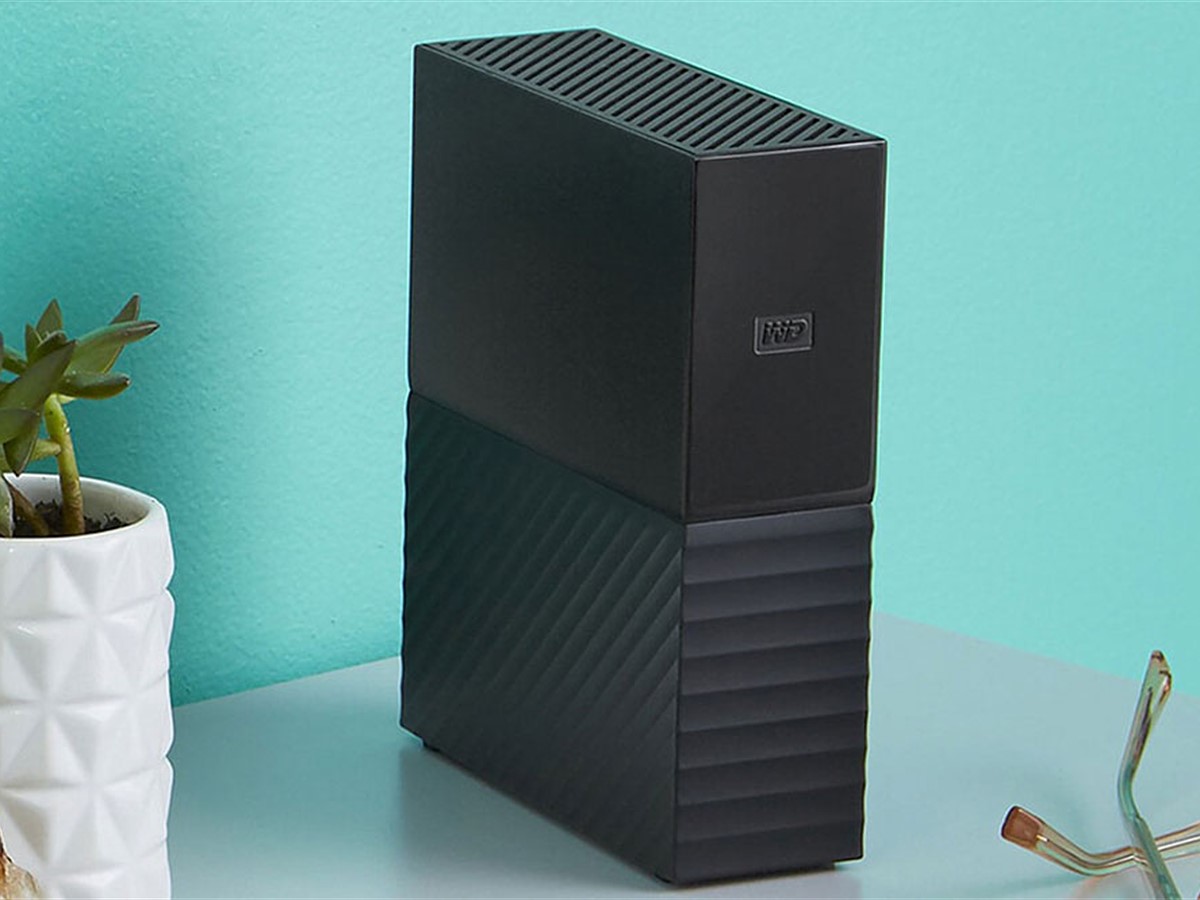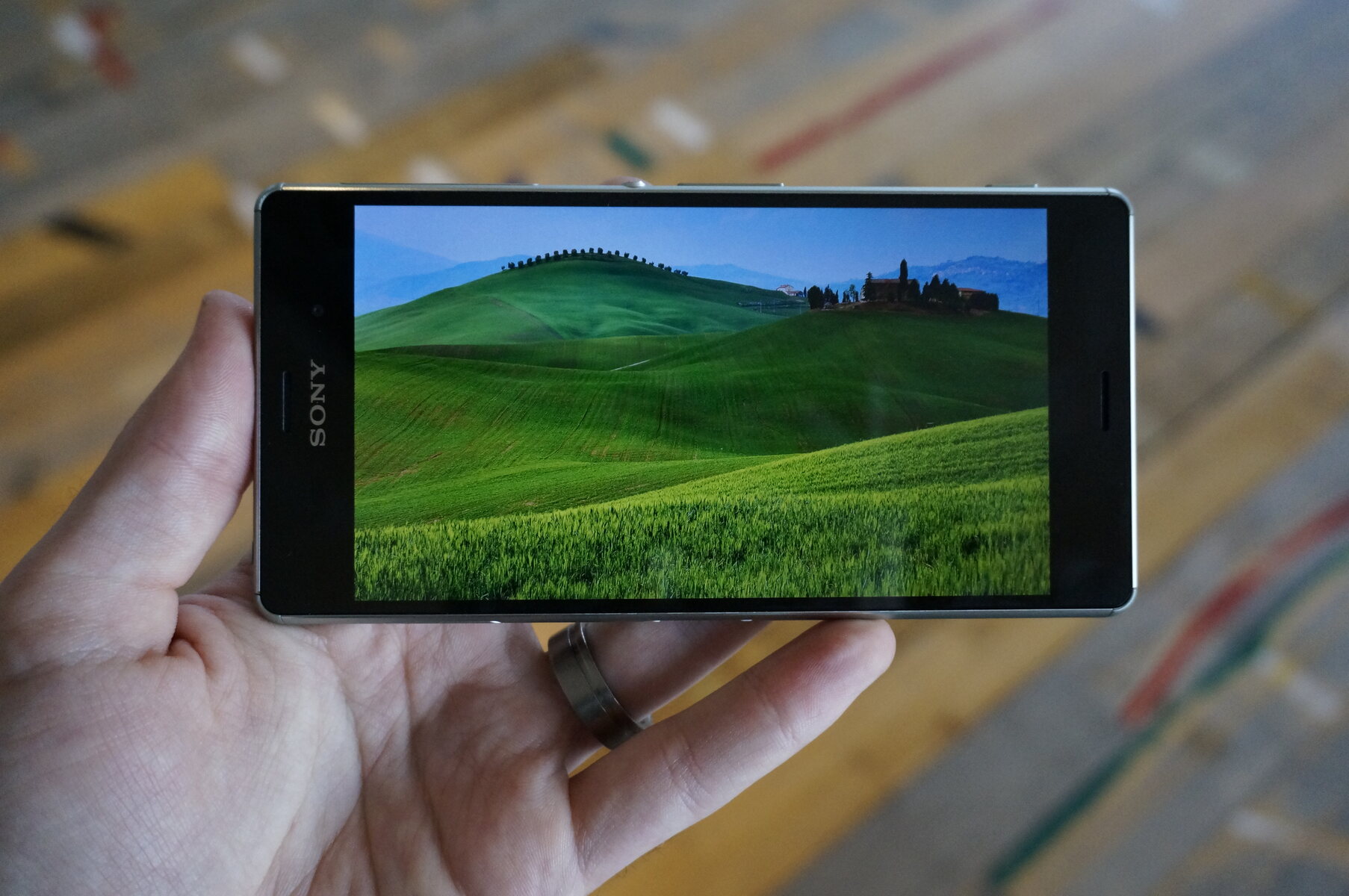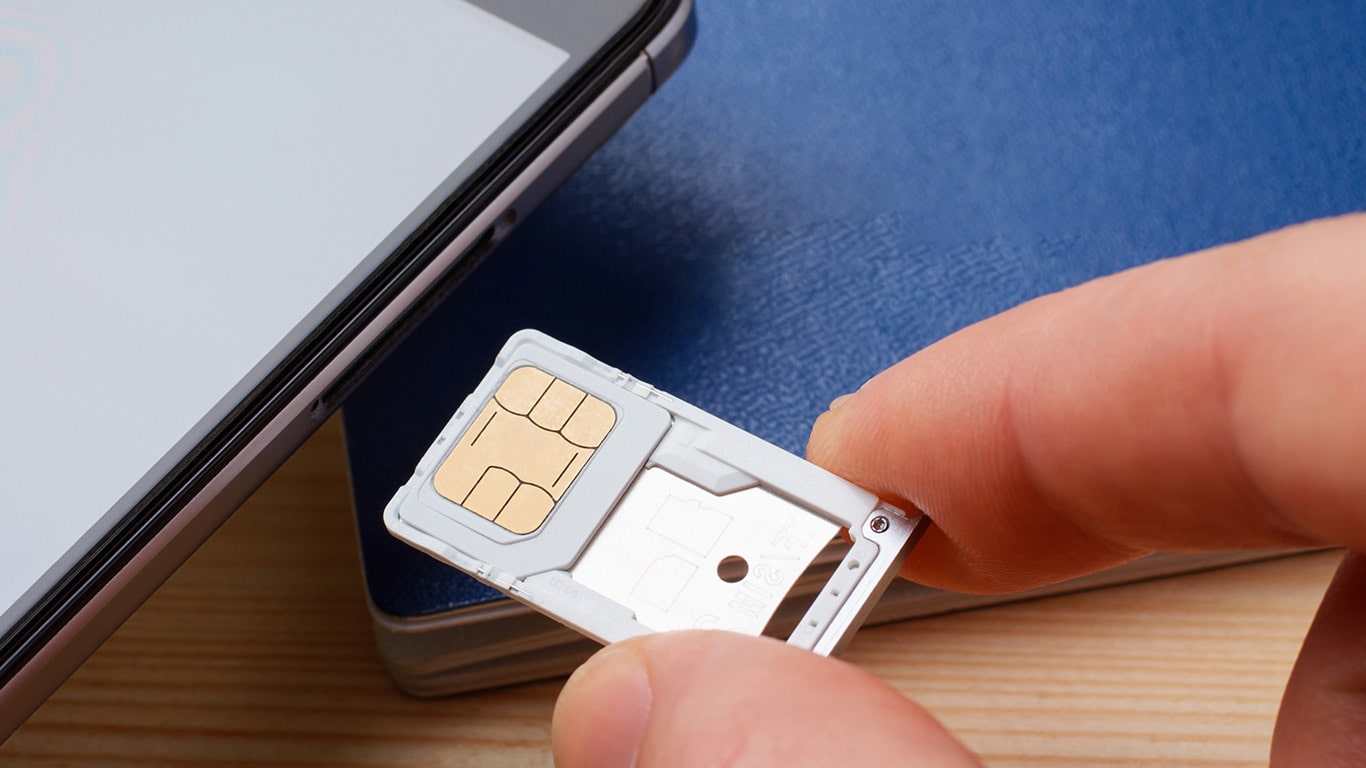Introduction
Welcome to our comprehensive guide on how to backup your smartphone to your computer. In today’s digital age, our smartphones have become an integral part of our daily lives, storing a vast amount of personal and sensitive information. From precious photos and videos to important contacts and documents, losing the data on your smartphone can be devastating. That’s why it’s crucial to have a backup of your device, ensuring that you can easily retrieve and restore your data in case of any mishaps or accidents.
Backups are particularly important before performing any software updates, factory resets, or if you’re planning to switch to a new phone. By creating regular backups, you can prevent the loss of valuable data and ensure a seamless transition to a new device without the fear of losing important files.
Fortunately, backing up your smartphone to your computer is a relatively straightforward process. Whether you’re using an iPhone, Android device, or any other smartphone, this guide will provide you with the essential steps and options to safely and efficiently back up your data.
In the following sections, we will explore different methods and tools that you can use to backup your smartphone. We will cover the software provided by your smartphone manufacturer, third-party backup software, and even exporting individual files to your computer. This way, you can choose the method that best suits your needs and preferences.
So, without further ado, let’s dive into the world of smartphone backups and discover the best ways to protect your valuable data.
Why You Should Backup Your Smartphone
Backing up your smartphone is not just a good practice, but it is also essential to protect your valuable data. Here are some compelling reasons why you should prioritize backing up your smartphone regularly:
- Data Loss Prevention: Accidents happen, and smartphones can get lost, stolen, or damaged. Without a backup, you risk losing irreplaceable photos, videos, contacts, and important documents. By creating regular backups, you can safeguard your data and easily restore it when needed.
- Switching to a New Phone: Whether you’re upgrading to a new smartphone or switching platforms, having a backup makes the transition smooth. You can transfer your data, apps, and settings to your new device seamlessly, ensuring you don’t lose any valuable information in the process.
- Software Updates and Troubleshooting: Major software updates may occasionally cause issues, and troubleshooting can sometimes result in data loss. Having a backup ensures that you can restore your device to its previous state if any problems arise during the update process.
- Accidental Data Deletion: We’ve all experienced the frustration of accidentally deleting important files or messages. By having a backup, you can quickly retrieve any deleted data and prevent irreversible loss.
- Device Failure: Smartphones, like any electronic device, can fail. Whether it’s due to a hardware malfunction or software corruption, having a backup gives you peace of mind knowing that you can restore your data onto a new device or after repairs.
Overall, backing up your smartphone is a proactive measure that ensures you have a copy of your data should any unforeseen events occur. It provides a safety net and eliminates the stress and frustration that comes with losing precious files or contacts. Remember, prevention is always better than trying to recover lost data, so make backing up a regular habit to protect your digital life.
Connecting Your Smartphone to Your Computer
Before you can start backing up your smartphone to your computer, you’ll need to establish a connection between the two devices. The method of connection will vary depending on the type of smartphone you have. Here are some common ways to connect your smartphone to your computer:
- USB Cable: The most common and straightforward method is to use a USB cable. Most smartphones come with a USB cable that can be connected to your computer’s USB port. Simply plug one end of the cable into your smartphone and the other end into a USB port on your computer. Ensure that your smartphone is unlocked and select the appropriate USB connection option (e.g., File Transfer, MTP, or Media Device) when prompted on your smartphone’s screen.
- Wireless Connection: Some smartphones support wireless connection options, such as Wi-Fi or Bluetooth, to transfer files between the device and your computer. Check your smartphone’s settings to see if it offers wireless connectivity options, and follow the instructions to pair and connect your smartphone to your computer wirelessly.
- Cloud Services: Another convenient option is to use cloud services like Google Drive, Dropbox, or iCloud to backup and sync your smartphone data. Install the corresponding cloud app on both your smartphone and computer, sign in to your account, and set up the sync settings to automatically back up your smartphone data to the cloud. This way, you can access and restore your data from any device with an internet connection.
Once your smartphone is connected to your computer, you’ll be able to access the device’s storage and transfer files between the two devices. This connection is necessary for various backup methods, including using software provided by your smartphone manufacturer or third-party backup software.
It’s important to ensure that you have a reliable connection and that both your smartphone and computer are recognized and communicate with each other. If you encounter any issues during the connection process, make sure that you have the latest device drivers installed on your computer and that your smartphone is configured correctly for file transfer.
Now that you’ve successfully connected your smartphone to your computer, let’s explore the different backup methods available to ensure your precious data is safe and secure.
Choosing the Right Backup Method
When it comes to backing up your smartphone to your computer, there are several methods and tools available. It’s essential to choose the right backup method that suits your needs and preferences. Here are three common options to consider:
- Option 1: Using Software Provided by Your Smartphone Manufacturer: Many smartphone manufacturers offer their own backup software. These programs are specifically designed to work seamlessly with their devices and provide a straightforward backup process. Examples include iTunes for iPhones, Samsung Smart Switch for Samsung devices, and Huawei HiSuite for Huawei devices. These manufacturer-provided software often allow you to back up your entire device, including apps, contacts, messages, and media files. They also offer features like incremental backups and encryption to ensure the security of your data.
- Option 2: Using Third-Party Backup Software: If you prefer more flexibility or have a smartphone from a manufacturer that doesn’t provide dedicated backup software, you can opt for third-party backup software. These tools are often compatible with multiple smartphone brands and offer additional features and customization options. Popular third-party backup software includes iMazing, MobileTrans, and Dr.Fone. These programs allow you to selectively back up specific files, transfer data between different devices and operating systems, and even restore backups to your smartphone.
- Option 3: Exporting Individual Files to Your Computer: If you only need to back up specific files or prefer a more manual approach, you can export individual files from your smartphone to your computer. This method is suitable for saving photos, videos, documents, and other files without creating a complete device backup. You can connect your smartphone to your computer, navigate to the folders or apps where the files are stored, and manually copy them to your computer’s storage. This method requires more manual effort but gives you full control over the files you want to save.
Consider your preferences, the amount of data you want to backup, and the level of control you desire when choosing the right backup method. Additionally, ensure that the chosen method supports the type of smartphone you have and is compatible with your computer’s operating system.
Now that we’ve explored the different backup options available, it’s time to delve into the step-by-step guide for backing up your smartphone to your computer.
Option 1: Using Software Provided by Your Smartphone Manufacturer
If you own a smartphone from a specific manufacturer, such as Apple, Samsung, or Huawei, there’s a good chance that they provide dedicated backup software. These applications are designed to work seamlessly with their devices, offering a simple and efficient way to back up your data. Let’s take a closer look at how to use the software provided by your smartphone manufacturer:
- Apple iTunes (for iPhones): iPhone users can back up their devices using Apple’s iTunes software. Connect your iPhone to your computer using a USB cable. Launch iTunes and select your device when it appears on the screen. In the Summary tab, click on “Back Up Now” to start the backup process. iTunes will create a full backup of your iPhone, including your apps, contacts, messages, and settings. You can also enable the “Encrypt iPhone backup” option for an extra layer of security.
- Samsung Smart Switch (for Samsung devices): Samsung offers the Smart Switch software, which allows users to back up their Samsung smartphones. Download and install Smart Switch on your computer from the official Samsung website. Connect your Samsung device to your computer using a USB cable. Launch Smart Switch and select the “Backup” option. You can choose to back up your entire device or select specific files. Click on “Backup” to start the process. Smart Switch will create a backup file that includes your apps, contacts, messages, media files, and more.
- Huawei HiSuite (for Huawei devices): Huawei provides HiSuite as the official backup software for their devices. Download and install HiSuite on your computer from the official Huawei website. Connect your Huawei device to your computer using a USB cable. Launch HiSuite and select the “Backup” option. You can choose between a full backup or selective backup. Follow the on-screen instructions to select the data you want to back up and proceed with the backup process. HiSuite will create a backup file that contains your apps, contacts, messages, media files, and more.
It’s important to note that the steps may slightly vary depending on the specific software version and the smartphone model you have. Make sure to follow the official guidelines provided by your smartphone manufacturer for the most accurate instructions. Additionally, these software applications often offer options to restore your backups to your device, making it convenient to get your data back if needed.
Using the software provided by your smartphone manufacturer is a recommended method as it is specifically tailored for your device. It ensures a comprehensive backup of your data and often provides additional features like encryption and incremental backups to enhance the security and efficiency of the backup process.
Now that you’re familiar with using the software provided by your smartphone manufacturer, let’s move on to explore another backup method – using third-party backup software.
Option 2: Using Third-Party Backup Software
If you’re looking for more flexibility or if your smartphone manufacturer does not provide dedicated backup software, you can turn to third-party backup software. These tools offer a wide range of features and support for various smartphone brands, allowing you to back up your data efficiently. Here’s how you can use third-party backup software to safeguard your smartphone data:
- iMazing: iMazing is a popular backup software that supports both iPhone and Android devices. Start by downloading and installing iMazing on your computer. Connect your smartphone to your computer using a USB cable. Launch iMazing, and it will detect your device. Click on the “Backup” option to initiate the backup process. iMazing offers options to create complete backups or selective backups of specific files. Follow the on-screen prompts to select the data and settings you want to back up and proceed with the backup.
- MobileTrans: MobileTrans is a versatile backup software that supports a wide range of smartphone brands and models. Begin by downloading and installing MobileTrans on your computer. Connect your smartphone to your computer using a USB cable. Launch MobileTrans and select the “Backup” option. MobileTrans provides a clear user interface with options to back up various types of data, such as contacts, messages, photos, and more. Select the data you want to include in the backup and click on the “Start” button to begin the backup process.
- Dr.Fone: Dr.Fone is another popular backup software that works with both iPhones and Android devices. Download and install Dr.Fone on your computer. Connect your smartphone to your computer using a USB cable. Launch Dr.Fone and choose the “Backup & Restore” option. Dr.Fone will automatically detect your device and display the available backup options. Select the data you want to back up, such as contacts, photos, videos, and more. Click on the “Backup” button to initiate the backup process. Dr.Fone also provides features like selective data restore and browsing the backup files.
These third-party backup software options offer additional features, such as cross-platform compatibility, selective data backup, and easy restore options. They provide a user-friendly interface that simplifies the backup process and ensures the security and integrity of your data. Make sure to download these software applications from trusted sources to guarantee their authenticity and reliability.
Remember to check the specific requirements and compatibility of the software with your smartphone model and your computer’s operating system before proceeding. Additionally, follow the instructions provided by the software developers to ensure a smooth and successful backup process.
Now that you’re familiar with using third-party backup software, let’s move on to explore the option of exporting individual files to your computer.
Option 3: Exporting Individual Files to Your Computer
If you prefer a more manual approach or only need to back up specific files from your smartphone, you can choose the option of exporting individual files to your computer. This method allows you to select and transfer specific files, such as photos, videos, documents, and more. Here’s how you can export individual files from your smartphone to your computer:
- Connect Your Smartphone: Start by connecting your smartphone to your computer using a USB cable. Make sure your smartphone is unlocked.
- USB Storage/File Transfer Mode: Once connected, on your smartphone’s screen, you may receive a notification asking for USB connection options. Select the “File Transfer,” “Media Device,” or “Transfer files” option, depending on your smartphone’s interface. This will enable your computer to access the files on your smartphone’s storage.
- Open File Explorer (Windows) or Finder (Mac): On your computer, open the File Explorer (Windows) or Finder (Mac) application, and you should see your smartphone listed as a connected device.
- Navigate to Files/Data: Using the File Explorer or Finder, navigate to the folders or apps where the files you want to back up are stored. For example, for photos and videos, you can usually find them in the “DCIM” folder. For documents and downloads, check the “Downloads” or “Documents” folder.
- Select and Copy Files: Select the files you want to back up by either dragging and dropping them to your computer’s desired location or by right-clicking and selecting the “Copy” option followed by pasting them into the desired folder on your computer. You can create a new folder specifically for your smartphone backup to keep things organized.
- Safety Eject the Smartphone: Once you have successfully copied the files to your computer, safely eject your smartphone from your computer. This ensures that all the data transfer is complete and prevents any potential data corruption or loss.
Exporting individual files to your computer provides you with more control over what you choose to back up and offers a more customized backup solution. It allows you to select specific files and transfer them securely to your computer, giving you the flexibility to organize and store them as you desire.
Remember to regularly check and update your backups to ensure that you have the most recent versions of your files. Consider creating multiple backup copies and storing them in different locations for added redundancy and protection against data loss.
Now that you’ve explored the option of exporting individual files, let’s move on to the next section, where we’ll provide you with a step-by-step guide for backing up your smartphone to your computer.
Step-by-Step Guide for Backing Up Your Smartphone to Your Computer
Backing up your smartphone to your computer is a straightforward process that ensures the safety and security of your data. Here’s a step-by-step guide to help you through the backup process:
- Connect your smartphone to your computer: Start by connecting your smartphone to your computer using a USB cable. Make sure your smartphone is unlocked and select the appropriate USB connection option, such as “File Transfer” or “MTP,” if prompted on your smartphone’s screen.
- Select the backup method: Depending on your preference and the options available for your smartphone, choose the backup method that suits your needs. You can either use the software provided by your smartphone manufacturer or third-party backup software.
- Follow the software instructions: If you’re using software provided by your smartphone manufacturer, launch the application on your computer and follow the on-screen instructions to initiate the backup process. Ensure that you select the desired data to include in the backup, such as apps, contacts, messages, and media files.
- Customize the backup settings: Many backup software options allow you to customize the backup settings to suit your preferences. For example, you may have the option to enable encryption for added security or choose whether to include app data or only backup specific folders.
- Wait for the backup process to complete: Depending on the amount of data being backed up and the speed of your computer and smartphone, the backup process may take some time. It’s important to remain patient and allow the software to complete the backup process without interruption.
- Confirm the backup: Once the backup process is complete, the software will typically display a notification or confirmation message. Take a moment to verify that the backup was successful and no errors occurred during the process.
- Safely disconnect your smartphone: Once you’re satisfied with the backup, safely disconnect your smartphone from your computer by either ejecting it using the system tray icon (Windows) or using the appropriate option in Finder (Mac). This ensures that all the data transfer is complete and prevents any potential data corruption or loss.
- Store your backup in a safe location: To ensure the longevity and accessibility of your backup, consider storing it in a safe location. This can be an external hard drive, a cloud storage service, or a combination of both. Keep in mind that having multiple backup copies in different locations provides added protection against data loss.
By following these steps, you can successfully back up your smartphone to your computer, giving you peace of mind and the ability to restore your data whenever needed.
Remember to regularly update your backups to include any changes or new data on your smartphone. Set reminders to perform periodic backups to ensure that your data is always up to date and protected.
Now that you know how to back up your smartphone to your computer, you can safeguard your valuable data and enjoy peace of mind knowing that your information is secure.
Conclusion
Backing up your smartphone to your computer is a crucial step in safeguarding your valuable data. By creating regular backups, you can protect yourself from potential data loss due to device damage, software issues, accidental deletion, or device theft. In this comprehensive guide, we explored different methods and tools to help you efficiently back up your smartphone to your computer.
We began by highlighting the importance of backing up your smartphone and the potential risks associated with not having a backup. We discussed the various reasons why you should prioritize creating backups, including data loss prevention, the ease of switching to a new phone, avoiding accidental deletion, and protecting against device failure.
We then explored the different methods of connecting your smartphone to your computer, such as using a USB cable, wireless connections, and cloud services. Establishing a reliable connection between your smartphone and computer is a crucial step in enabling data transfer and backup processes.
Next, we discussed the three main options for backing up your smartphone to your computer. These options include using software provided by your smartphone manufacturer, utilizing third-party backup software, or exporting individual files manually. We provided step-by-step instructions for each option to ensure a smooth and successful backup process.
To conclude, backing up your smartphone is not an optional task but an essential responsibility to protect your data. Whether you choose to use software provided by your smartphone manufacturer, third-party backup software, or export individual files, create a regular backup routine that suits your needs and preferences. Remember to store your backup in a safe and secure location, such as an external hard drive or cloud storage service, to ensure the longevity and accessibility of your data.
Now that you have the knowledge and tools to back up your smartphone to your computer, take the necessary steps to ensure the safety and security of your valuable data. By prioritizing backups, you can have peace of mind knowing that your information is protected, and you can easily restore it whenever required.







